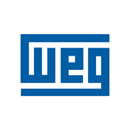The European ROHS Directive 2011/65/EU comes into force on June 22, 2019 and establishes a new list of hazardous substances in Electrical and Electronic Equipment (EEE) as well as new rules for drawing up declarations of conformity and affixing the CE marking.

RoHS1 2 refers to Directive 2011/65 / EU and establishes “ rules on the restriction of the use of hazardous substances in electrical and electronic equipment (EEE) with a view to contributing to the protection of human health and the environment, including the environmentally sound recovery and disposal of waste EEE“. in Directive 2011/65/EU of the European Parliament and of the Council of 8 June 2011, on the restriction of the use of certain hazardous substances in electrical and electronic equipment, Article 1.
Categories of EEE covered by this Directive:
- Large household appliances
- Small household appliances
- IT and telecommunications equipment
- Consumer equipment
- Lighting equipment
- Electrical and electronic tools
- Toys, leisure and sports equipment
- Medical devices
- Monitoring and control instruments including industrial monitoring and control instruments
- Automatic dispensers
- Other EEE not covered by any of the categories above as generators. In relation to these, generator sets with power above 375kW (in RoHS 2 FAQ, page 12 – https://bit.ly/2sL43VE) or equipment produced and considered as “large industrial fixed tools” and / or “Large fixed installations.” in Official Journal of the European Union, Directive 2011/65 / EU of the European Parliament and of the Council, Article 2, lines d) and e)
Restricted substances and maximum concentration values tolerated by weight in homogeneous materials2:
- Lead (0,1 %)
- Mercury (0,1 %)
- Cadmium (0,01 %)
- Hexavalent chromium (0,1 %)
- Polybrominated biphenyls (PBB) (0,1 %)
- Polybrominated diphenyl ethers (PBDE) (0,1 %)
In addition to this new list, new rules will be imposed in the EU Declarations of Conformity, namely:
1. The EU declaration of conformity shall state that it has been demonstrated that the requirements specified have been met.
2. The EU declaration of conformity shall have the model structure and shall contain the elements specified below and shall be updated. It shall be translated into the language or languages required by the Member State on the market of which the product is placed or made available.
3. By drawing up the EU declaration of conformity, the manufacturer shall assume responsibility for the compliance of the EEE with this Directive. Declarations of compliance with this new directive should include the following model / parameters:
- No … (unique identification of the EEE);
- Name and address of the manufacturer or his authorised representative;
- The declaration of conformity is issued under the sole responsibility of the manufacturer (or installer);
- Object of the declaration (identification of EEE allowing traceability. It may include a photograph, where appropriate);
- The object of the declaration described above is in conformity with Directive 2011/65/EU of the European Parliament and of the Council of 8 June 2011 on the restriction of the use of certain hazardous substances in electrical and electronic equipment;
- Where applicable, references to the relevant harmonised standards used or references to the technical specifications in relation to which conformity is declared;
- Additional information;
- Signatures (signed for and on behalf of), place and date of issue, name and function.
With regard to CE marking, it shall:
- be affixed visibly, legibly and indelibly to the finished EEE or to its data plate.
- be affixed before the EEE is placed on the market.
- build upon existing mechanisms to ensure the correct application of the regime governing the CE marking and take appropriate action in the event of improper use of the CE marking.
____________________
1 | ‘RoHS’ Restriction of Certain Hazardous Substances
2 | ‘homogeneous material’ means one material of uniform composition throughout or a material, consisting of a combination of materials, that cannot be disjointed or separated into different materials by mechanical actions such as unscrewing, cutting, crushing, grinding and abrasive processes.
Sources:
http://ec.europa.eu/environment/waste/rohs_eee/pdf/faq.pdf
https://eur-lex.europa.eu/legal-content/EN/TXT/?uri=CELEX:02011L0065-20171211






